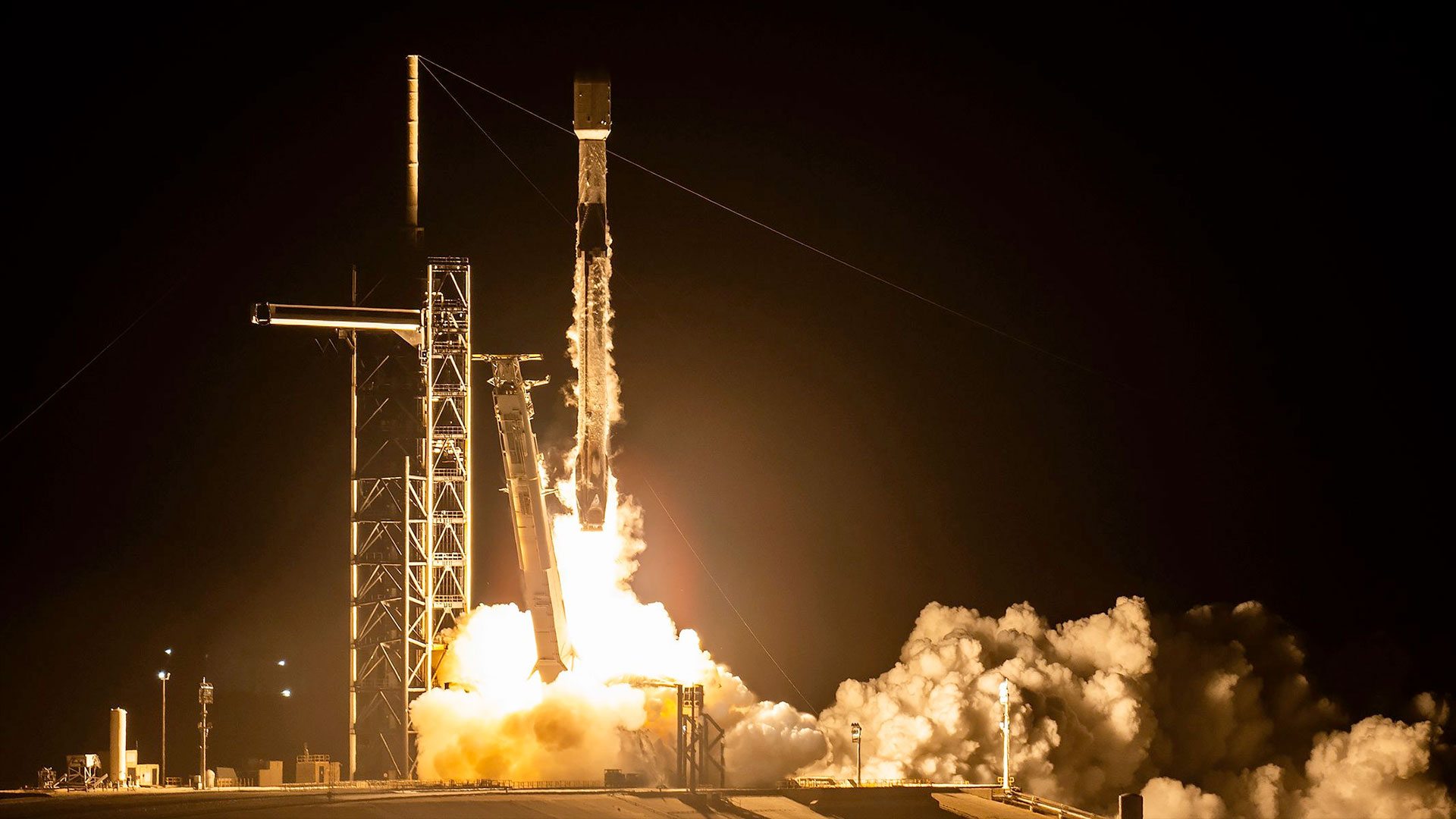
SpaceX has launched its last mission of the year.
A Falcon 9 rocket topped with 21 Starlink broadband internet satellites, including 13 with direct-to-cell capability, lifted off from Launch Complex 39A (LC-39A) at NASA’s Kennedy Space Center in Florida on Tuesday (Dec. 31). The launch occurred at 12:34 a.m. EST (0534 GMT).
The launch marked SpaceX’s 134th Falcon flight in 2024, surpassing the company’s prior year total by 38 missions. Of this year’s launches, 89 were devoted to expanding the Starlink global network.
Tuesday's launch was also SpaceX's third Falcon 9 launch in three days, following a Starlink mission launched from California and a four-satellite launch for Astranis from the company's other Florida launch pad at the Cape Canaveral Space Force Station.
To plan, the Falcon 9 first stage that launched this mission returned to Earth about 8 minutes after lifting off and landed on board the droneship "Just Read the Instructions" stationed in the Atlantic Ocean.

The Falcon 9's upper stage successfully deployed the 21 Starlink satellites into low Earth orbit.
This was the 16th flight for this particular first stage booster, according to a mission description posted to SpaceX’s website. It previously was used in the launch of Crew-6, BlueBird-1, USSF-124, mPOWER-B and 11 other Starlink missions.
Starlink is the largest satellite constellation ever deployed — and it's continuously growing, as Tuesday's launch demonstrates. There are currently more than 6,850 active Starlink spacecraft, according to satellite tracker and astrophysicist Jonathan McDowell.







